Mountain Gorilla Census 2010
By Gorilla Doctors Staff on Tuesday, May 4th, 2010 in Uncategorized.Blog by: Dr. Jean Felix Kinani
MGVP Rwandan In-Country Field Veterinarian
How many gorillas live in the Virunga Massif? This is a question that has not been answered since the last census of the habitat in 2003. The Virunga Volcanoes is one of only two locations where mountain gorillas live. The last census in 2003 resulted in an estimate of 380 individual gorillas. For the past 8 weeks the Wildlife and National Park Authorities of Uganda, Rwanda and DRC collaborated on this important, trans-boundary census of the Virunga populations of mountain gorillas.
I was given the opportunity to participate in the census this year as a team leader. This was a very meaningful experience for me; participation in this important aspect of gorilla conservation complimented my work as a Gorilla Doctor. I was one of 80 trans-boundary team members working on this project.
The objective of the census was to establish an update total population size in the Virunga Massif and to compare with the previous censuses in 2003 and 1989. We also wanted to determine the level of the human disturbance, survey for diseases and take fecal samples for genetic analysis.
The 2010 census started with a three days workshop where participants from all three countries met to learn census methods and to collect our equipment for the job. We were to camp in the park for 2 weeks in teams of 8 individuals, and move through the forest following transects using maps and GPS positions, and count every gorilla night nest we discovered. We were also collecting fecal samples from each nest for disease screening and genetic analysis. On the 15 March, my team of 8 individuals walked into the forest to our first camp and began the install our camp with the help of porters from Kampande. After 5 days work in the forest, we moved to another camp in Mukecuru area for two days. Our last camp was at KARISOKE, the beautiful area that was the original research station of Dian Fossey.
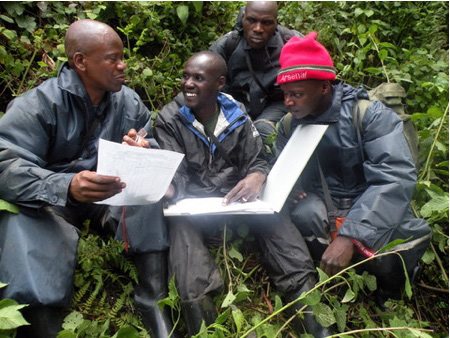 Our morning meeting.
Our morning meeting.
Despite the abundant rain, the cold and the mud everywhere, the motivation of the team didn’t disappear. We knew we had to do hard work. The success of the census this year was our goal, and we knew the importance of the program. We were happy for the support from people around the world with conservation NGOs, helping to make this program successful. We were ready for the challenges! I worked with a great team composed of with people from MGNP, PNVI and PNV who help a lot in the achievement of our daily work. They all love the animals, and are very interested in protecting gorillas and their habitat.
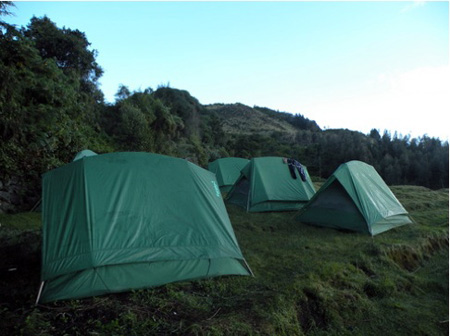 Typical campsite.
Typical campsite.
Each morning during two weeks in the field we followed our transect, and when we found a gorilla trail we followed it, and when we reached the gorilla night nests we counted each nest and collected feces. We also measured the size of the feces which was necessary to determine the age of the individual using that nest. We were also able to remove few snares that had been set for antelope and recorded where these illegal activities occurred. We observed many wild animals as well (buffalo, bush-buck, hyrax, chameleons, and many birds). We tracked and collected samples from a total of six gorilla research group and feces from three lone silverbacks in the two sectors we worked.
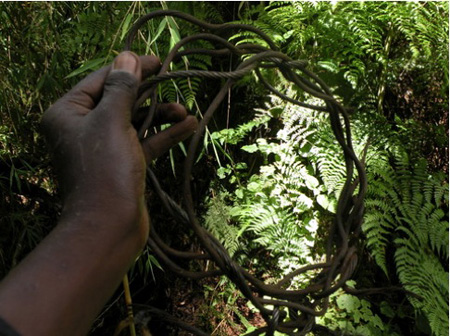 Buffalo snare found on the trail and removed.
Buffalo snare found on the trail and removed.
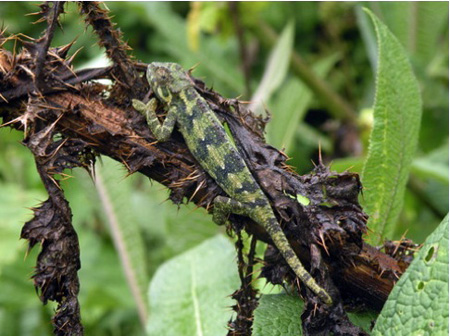 Side striped chameleon.
Side striped chameleon.
This program in the field was also very good exercise for us! The ravines were steep and muddy, but I was very happy when hiking. Working in the field is my favorite part of my regular work as a Gorilla Doctor. During the census we discovered beautiful vegetation, innumerable streams, and crossed crazy and very deep ravines, although sometimes we were forced to avoid ravines for the security of the team. The forest was beautiful, and we moved through bamboo, Hypercum, Hagenia, sub- Alpine and alpine areas. The Subalpine was amazing with a mix of giant lobelia and ferns. Even spending many years working in this area, I had not had this special opportunity to truly appreciate the amazing vegetation.
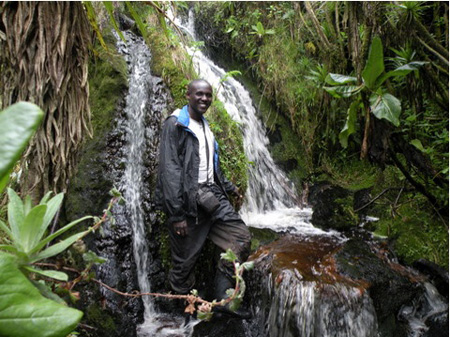 One of the many beautiful streams we encountered.
One of the many beautiful streams we encountered.
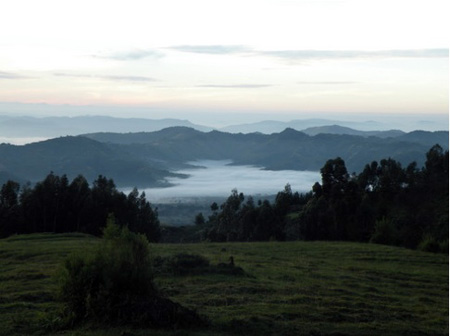 Mountain lake.
Mountain lake.
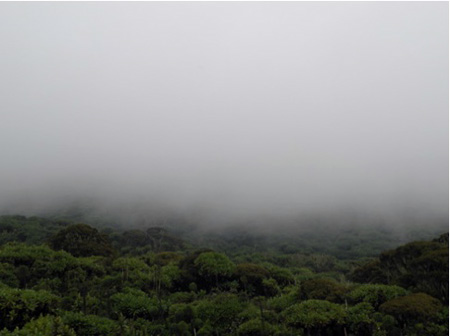 Start of a misty, rainy day, although beautiful!
Start of a misty, rainy day, although beautiful!
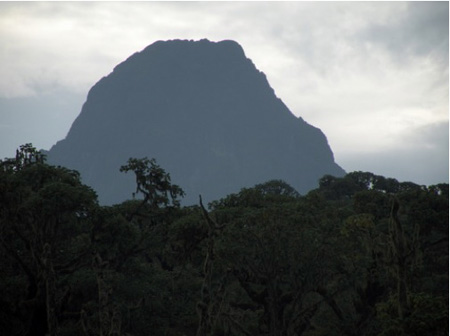 Mikeno volcanoe from DRC seen from Rwandan side.
Mikeno volcanoe from DRC seen from Rwandan side.
I’m proud to for the work we achieved, and thank my team and the people who supported this 2010 mountain gorilla census, particularly the Rwanda Development Board, the Institut Congolais pour la Conservation de la Nature and the Uganda Wildlife Authority. The exercise was also supported by the International Gorilla Conservation Programme (a coalition of AWF, WWF and FFI), the Mountain Gorilla Veterinary Project, the Dian Fossey Gorilla Fund International, and the Max Planck Institute for Evolutionary Anthropology.
The early results are promising, and I am hopeful to receive at the end of the study estimates of increasing number of mountain gorilla in the Virunga Massif. All results of this work will be vital in looking at population trends and determining the best collaborative way forward for mountain gorilla conservation.
Help the Gorilla Doctors.


 Donate
Donate